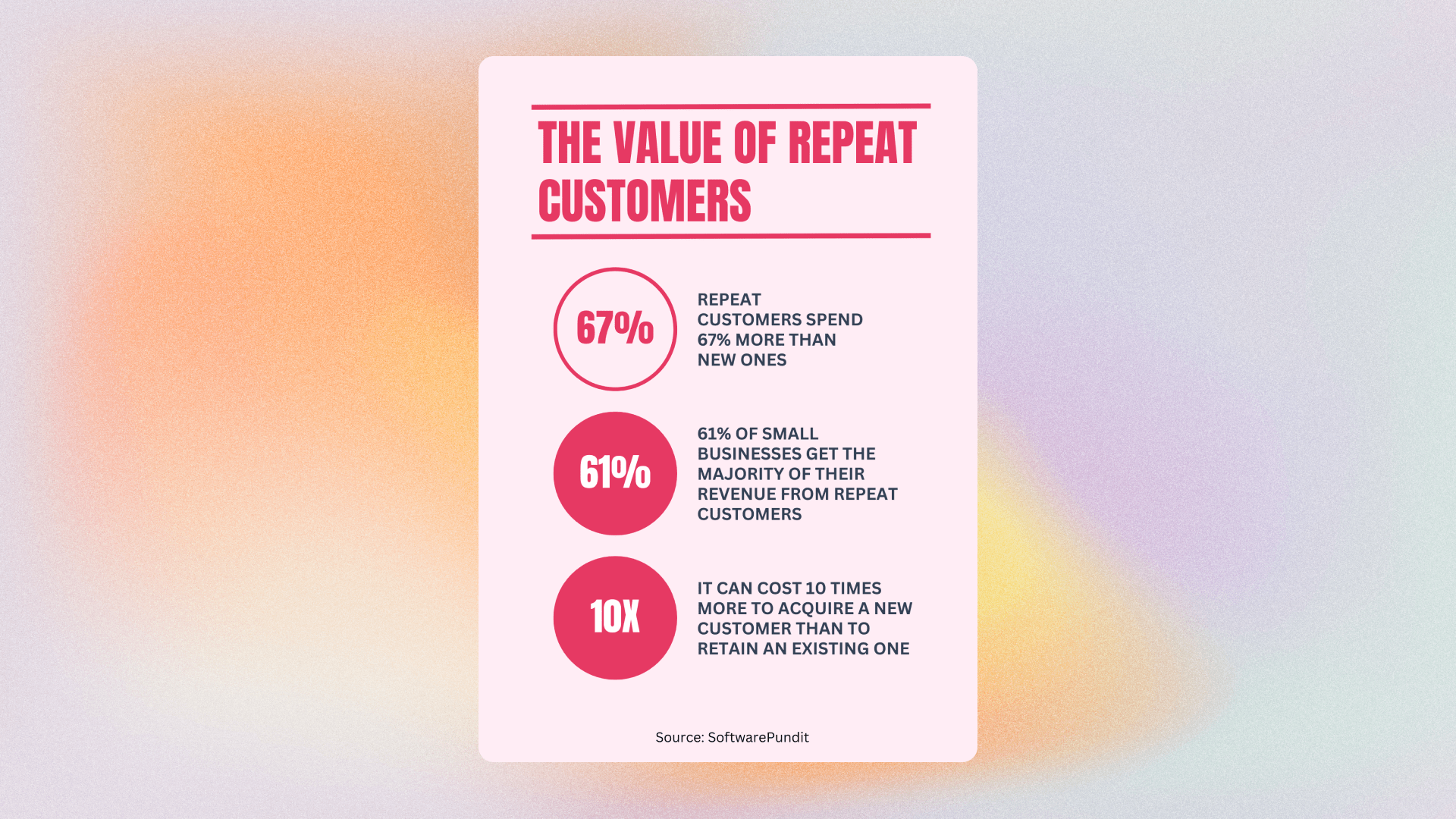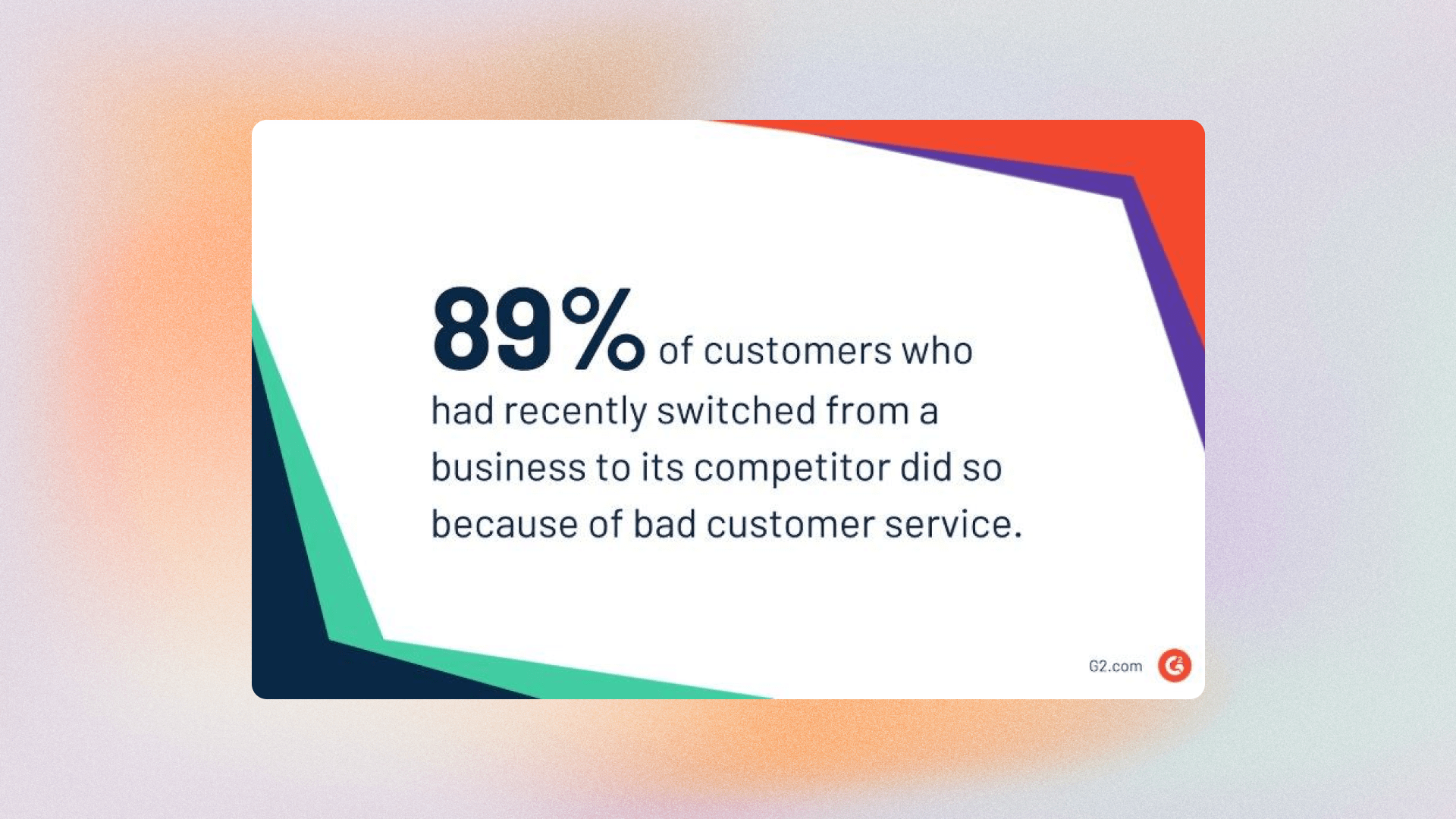=In today's highly competitive business landscape, retaining loyal customers is more crucial than ever.
With the seemingly endless options available to consumers, businesses need to build strong relationships with customers and encourage them to return time and time. Repeat customers fuel business growth by providing stable revenue, reducing marketing costs, and offering opportunities for upselling. They can also promote businesses through word-of-mouth, attracting new customers and amplifying growth.
The key to cultivating a base of loyal clientele lies in identifying and understanding the needs and preferences of your existing customers. By analyzing their behaviors and purchasing patterns, businesses can tailor their marketing efforts to cater to these individuals, ensuring a higher likelihood of repeat transactions.
This article delves into the subject of identifying potential repeat customers and shares actionable insights on increasing their engagement with your business. Read on to uncover the secrets behind transforming your one-time buyers into lifelong supporters.
Understanding the Value of Repeat Customers
Repeat customers are a testament to the quality of your products and services, regardless of whether you offer services such as reseller price monitoring software or sell handmade jewelry.
Such customers also tend to have a higher conversion rate than first-time buyers already familiar with your brand and products. Consequently, they are more likely to engage with promotional materials and make additional purchases.
Moreover, repeat customers typically spend 67% more than new customers. As their trust in the brand grows, they become more comfortable purchasing higher-priced items or adding more products to their carts.
It's also no secret that acquiring new customers can be expensive, as it often requires significant investments in advertising and promotional efforts. In contrast, maintaining relationships with existing customers needs less expenditure.
Still, it's a multifaceted process that may require a solution like a professional email delivery service provider. This way, you can ensure regular communication with your repeat customers, personalize the messages based on customer data, and offer superb customer service.

Identifying Repeat Customers
Businesses need to closely monitor customer data and purchase patterns to identify repeat customers effectively. This can help them pinpoint the most popular products or services among returning clients.
Here are some strategies that businesses typically use to identify repeat customers:
- Customer accounts. If your business has a platform where customers can create their own accounts, this will be a straightforward method to identify repeat customers. Every time a customer makes a purchase, this will be recorded under their account, allowing you to track their purchase history.
- Loyalty programs. Loyalty programs encourage customers to make repeat purchases, and it's a great way to identify and track them. Customers are typically given a card or account that records their purchases. In return for their loyalty, they can earn points, discounts, or other benefits.
- CRM software. Customer Relationship Management (CRM) software can track a wide range of customer interactions and transactions. This is particularly useful for businesses with a large number of customers. CRM software can also generate insights into customer behavior that can be used to increase repeat purchases.
- Email marketing. If you have an email list, you can identify repeat customers by monitoring who opens and engages with your emails and who makes purchases through email promotions.
- Analytics tools. If your business operates online, free analytics tools such as Google Analytics, Kissmetrics, or Mixpanel can identify unique users who visit your website or app multiple times, even if they don't make a purchase. Cookies and IP addresses can also be used to track visitor behavior.
- Customer surveys and feedback. Customer surveys can help you identify repeat customers if they choose to reveal this information. Feedback forms can include questions about previous purchases.
- Social media engagement. Regular followers or users who consistently engage with your content on social media platforms can be considered repeat customers. They show interest and engagement with your brand.
Remember, privacy is of utmost importance when tracking customers. Always respect privacy laws and policies while trying to identify repeat customers. Inform your customers about how you use their information and obtain their consent when necessary.
Strategies to Increase Repeat Customers
Boosting customer loyalty is key to long-term business success. Explore these proven strategies to increase repeat customers, enhance engagement, foster brand loyalty, and maximize your business growth potential.
Personalization and Segmentation
Understanding your customers' preferences and needs allows you to create personalized marketing messages that resonate with them on a deeper level. By crafting customized content, businesses can improve the chances of repeated engagement and customer retention.
Offering targeted promotions based on customers' purchasing history is another effective way to encourage customers to return to your business. These exclusive deals make customers feel valued and encourage them to continue choosing your brand over competitors.
You can also use strategies such as offering tailored recommendations suited to customers' past browsing or purchase behavior. Another idea is to send customers special discount offers on their favorite items or categories on their birthdays or customer anniversaries.

Exceptional Customer Service
Exceptional customer service is the cornerstone of customer retention and loyalty. It not only addresses customer needs but resolves issues swiftly and leaves a lasting impression, turning first-time buyers into repeat customers.
For instance, when you quickly address customer concerns, it demonstrates your commitment to their satisfaction. Thanks to providing prompt, effective solutions to issues that arise, your enterprise can foster trust and loyalty among its clientele.
Additionally, regularly updating customers on new products, services, or promotions keeps your brand in their minds. Maintaining open lines of communication also encourages customers to provide valuable feedback, which can be used to enhance their experience further.
Building a Strong Brand Identity and Community
A cohesive brand identity ensures that customers recognize your business across all platforms. Maintaining consistent messaging is a great way to create a sense of familiarity that encourages customers to return repeatedly.
Furthermore, being present and active on social media, be it Instagram, Facebook, LinkedIn, or Twitter, is an excellent opportunity for businesses to connect with their audience in real-time, fostering a sense of community among followers.
Events such as webinars or workshops can also work great and help businesses directly engage with their audience while showcasing their expertise in the industry. These gatherings foster a sense of loyalty among attendees by providing valuable information and facilitating personal connections.
Last but not least, offering loyalty programs can also be a great way to work on building your brand identity. For instance, you can drive repeat business by rewarding customers for continued support. Exclusive benefits, discounts, or rewards, companies can encourage customers to maintain an ongoing relationship with the brand.
In Conclusion
Repeated customers are the bedrock of business growth and sustainability. Identifying and retaining these loyal customers is invaluable in the contemporary competitive landscape.
Thanks to leveraging customer data and analytics, businesses can understand the needs and behaviors of these customers and cater to them more effectively. Additionally, by using personalization and segmentation, businesses can make their customers feel valued, boosting customer loyalty and retention.
A strong brand identity, exceptional customer service, and active engagement on social media are all excellent methods to further solidify customer relationships. As businesses continue to prioritize and cultivate these strategies, they will unlock the potential of repeat customers, thereby improving their bottom line.


